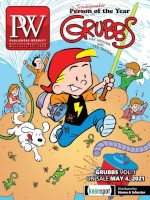Walker investigates the complex legacy of the civil rights era in The Black Panther Party (Ten Speed, Jan.).
What parallels did you want to bring out between the struggles of the 1960s and society today?
When you look at the history of racial injustice and race-related violence in this country, especially within the 20th century, almost all of it was related to incidents of police brutality, or police killing somebody. I remember the night that Minneapolis started burning after George Floyd’s death. I wondered how this was different from when the cops in Northern California killed Denzil Dowell in 1967, which was one of the inciting incidents in the formation of the Panthers. Every time you see Breonna Taylor or George Floyd or Ahmaud Arbery, any Black person who’s been killed, you begin to realize the history. You still see the legal systems working to more often than not protect the aggressor, as opposed to protecting the victim.
There are many books about the Panthers, what’s new here?
I wrote it for readers who knew nothing about the Panthers. I think, more than anything, I was trying to write this graphic novel for the 14-year-old me who knew that a group called the Black Panthers existed, but knew very little about them. I tried to get at the facts. I wanted to avoid negative portrayals of the Panthers but I didn’t want to gloss over anything.
How did you approach portraying the violence?
I was cognizant of not leaning into any sort of graphic or exploitative violence. I didn’t want to glorify either the violence that the Panthers engaged in, or the violence that was perpetrated upon them. With Bobby Hutton and Fred Hampton, I made the decision early on that I was going to focus on their killings, because they were so tragic. I thought, “What would somebody’s family say about this? What would Fred Hampton’s son say about this? What was his wife going to say about this?”
You wrote in the afterword that writing this book broke your heart. Why?
In the period, there was so much violence, and so many people who died, or were hurt, or their lives were ruined. And you spend a lot of time living in that when you’re doing the research. I made the decision early on that I wanted to list all the martyrs that are recognized by the Civil Rights Museum. Then you’re trying to find pictures of these people and find out everybody’s name, and it’s a lot of death and racism and oppression to wake up to in the morning. Fred Hampton was barely 21 when he was killed, Bobby Hutton was 16. While I’m far removed from that age, I also remember that feeling of being invincible and wanting to stand up to the systems of oppression.



 Volume 267
Issue 52
12/21/2020
Volume 267
Issue 52
12/21/2020





